|
Getting your Trinity Audio player ready... |
Understanding Vacuum Mixers and Their Applications
What is a Vacuum Mixer?
Vacuum mixer: A vacuum mixer is a specialized piece of electromechanical equipment designed to mix ingredients under vacuum conditions. This sophisticated machine is highly valued for its ability to eliminate the formation of bubbles during the mixing process, which can be crucial in ensuring the quality and consistency of the final product. The use of vacuum mixers spans across various industries, including pharmaceuticals, food production, and cosmetics, where precision and quality are paramount.
How to Use a Vacuum Mixer for Material Mixing?
Using a vacuum mixer to blend different types of softgel capsule ingredients involves several carefully orchestrated steps. Below is a detailed guide on the process:
Step One: Preparation Stage
Before you begin the mixing process, it’s essential to ensure that the vacuum mixer is in optimal working condition. This involves checking for any mechanical issues and ensuring all parts are clean and functional. Simultaneously, you should prepare the ingredients required for the mixture by accurately measuring them. This stage also includes configuring the machine by programming it according to the specific mixing requirements.
Step Two: Filling the Vacuum Mixer Tank
Once the machine is ready, you will load the central mixing drum with the pre-measured ingredients. After powering on the machine, the mixing and blending process begins. The central mixer drum features a casing enclosure that helps pump out excess air, creating a vacuum environment within the drum. As the motor system rotates the blade inserts inside the central mixer drum, the blades slice and blend the materials into a homogenous mixture. Upon completing the mixing process, the homogenous mixture is discharged through the chute.
Components of a Vacuum Mixer
A vacuum mixer comprises several key components that work together to perform its functions effectively. These include:
- Central Mixer Drum: The primary area where mixing occurs. The drum is enclosed in a casing system that removes excess air, creating a vacuum.
- Blade Inserts: These rotating blades slice and cut the ingredients into smaller pieces, blending them to form a uniform mixture.
- Control Panel: This is where you input the mixing specifications and monitor the operations.
- Motor System: Converts electrical energy into mechanical energy, driving the blade inserts and activating the casing system to create a vacuum.
- Electrical Unit: The main power source for the vacuum mixer.
- Discharge Chute: The outlet for the homogenous mixture from the vacuum mixer tank.
- Lid of the Vacuum Mixer: Prevents ingredients from escaping the central mixer drum.
Benefits of Using a Vacuum Mixer
Using a vacuum mixer offers several advantages:
- Elimination of Voids: Prevents the formation of unsightly voids during the mixing process, resulting in a more consistent product.
- Improved Dispersion Quality: Enhances the dispersion quality of ingredients by eliminating gas.
- Degassing: Removes excess air from the mixture, ensuring a high-quality blend.
- Enhanced Drying: Allows for better drying of the final product at lower temperatures.
Challenges and Disadvantages of Using a Vacuum Mixer
Despite its numerous benefits, using a vacuum mixer also poses some challenges:
- High Initial Cost: Purchasing and installing a vacuum mixer can be expensive, though the investment can yield quick returns.
- Skilled Technicians Required: Operating the machine may require hiring experienced technicians or training existing staff, which can be costly.
Exploring Softgel Drying Trays and Colloid Mills
What are Softgel Drying Trays?
Softgel drying trays are integral components of the softgel drying system. These trays are used to place softgel capsules for drying. They are often used in conjunction with drying equipment, such as drying tunnels, to ensure the capsules are properly dried. Additionally, softgel tumble dryers also utilize these trays for drying purposes.
Understanding Colloid Mills
A colloid mill is a machine designed to reduce the particle size of solids suspended in liquids. It can also be used to reduce the size of droplets in various emulsions. Colloid mills are commonly used in industries such as pharmaceuticals, cosmetics, and food processing.
How Does a Colloid Mill Work?
The working principle of a colloid mill involves a rotor-stator mechanism that reduces particle sizes. Here’s a step-by-step guide:
Step One: Preparation of Ingredients
Begin by preparing both the ingredients and the machine. Measure the ingredients to the desired specifications and pour them into the hopper. Ensure the machine is in proper working condition.
Step Two: Actual Milling Process
The machine allows the ingredients to pass through the cooling water pipe joint into the main grinding unit. The high-speed rotor then hits and disperses the particles, breaking them into smaller sizes. The colloids are formed according to the product specifications and discharged through the machine’s port.
Key Components of a Colloid Mill
For a colloid mill to function efficiently, it relies on several key components:
- Hopper: The part where ingredients are placed.
- Auto-Circular Tube: Delivers materials and recycles those not properly milled.
- Handle: Used to control the milling process and move the machine.
- Cooling Water Pipe Joint: Introduces cooling water to mix with materials.
- Adapter Plate: Links the upper and lower parts of the mill.
- Electromotor: Provides necessary energy for operations.
- Power Pot: Stores and supplies power.
- Discharge Port: Where the final product exits the machine.
- Lifting Cover: Covers the mill during operation.
- Base Support: Supports the entire mill structure.
Benefits of Using a Colloid Mill
Colloid mills offer several advantages:
- Versatility: Suitable for various applications, including slurry comminution.
- Pressure-Free Ionization: No pressure required for the process.
- Simple Construction: Easy to operate and adjust to production specifications.
- Self-Draining: No need for an external draining system.
- Different Capacities: Available in various capacities with minimal requirements.
- Durable Construction: Rotor-motor system reduces wear and tear.
- Low Noise Levels: Quiet operation.
Disadvantages of Using a Colloid Mill
However, colloid mills also have some drawbacks:
- Limited Applications: Not suitable for all solid materials.
- Wear and Tear: Prone to damage due to rotating plates.
- Limited Fine Grinding: Cannot achieve extremely fine grinds.
- Energy Consumption: High energy usage depending on operating factors.
E
What is a Softgel Tumble Dryer?
Softgel tumble dryer : A softgel tumble dryer is an essential machine in the softgel capsule production process, utilized primarily for drying the capsules through a gentle tumbling motion. This process involves the use of fan blowers and heat generators, which work together to heat the air and expel excess moisture from the capsules.
How Does a Softgel Tumble Dryer Work?
The softgel tumble dryer operates on the principle of removing excess moisture from the capsules by circulating heated air. Here is a detailed step-by-step guide on how a softgel tumble dryer works:
Step One: Loading the Softgel Tumble Dryer
The initial step involves preparing the machine by setting the drying specifications for the softgel capsules. Following this, the softgel encapsulation machine fills the baskets of the tumble dryer to their capacity.
Step Two: Actual Tumble Drying
Once the baskets are loaded, the machine begins the tumbling process, which typically lasts for 30 to 40 minutes. During this phase, the fan blower circulates air through the softgel capsules, effectively removing excess moisture. Additionally, specific heating elements within the machine generate sufficient heat to aid in the drying process. By the end of this cycle, the soft gelatin capsules will have lost approximately 25% of their total moisture content.
What are the Parts of a Softgel Tumble Dryer?
A softgel tumble dryer comprises several key components, each playing a vital role in the drying process:
Baskets
The baskets are crucial as they hold the softgel capsules in place during the tumble-drying process. The capacity and drying speed of the softgel capsules can be determined by the design and size of these baskets.
Control Interface
The control interface is the command center of the tumble dryer, allowing operators to manage and set the drying specifications. This interface enables the programming of the drying machine by inputting the required drying parameters for the softgel capsules.
Motor Power
The motor provides the necessary energy to drive the tumble-drying system. The size of the tumble dryer significantly influences the amount of power required for efficient operation.
Fan Blower
The fan blower accelerates the drying process by circulating air over and under the drying trays, ensuring even and efficient moisture removal.
Why Do You Need a Softgel Tumble Dryer?
Utilizing a softgel tumble dryer offers numerous advantages, making it an indispensable piece of equipment in the softgel capsule manufacturing process:
Fast
The machine rapidly eliminates excess moisture from the softgel capsules, saving valuable time in the production process.
Efficient and Accurate
Operators can calibrate the machine to precisely and efficiently remove excess moisture, ensuring consistent quality.
Easy to Operate
The tumble dryer features a user-friendly human-machine interface, making it easy to learn and operate.
Cheaper to Clean and Maintain
Automatic cleaning systems within the tumble dryer make it cost-effective and straightforward to maintain.
Are There Disadvantages to Using a Tumble Dryer?
While the softgel tumble dryer offers many benefits, there are certain drawbacks to consider:
Initial Investment
The initial cost of purchasing and installing a tumble dryer can be significant.
What Should You Consider When Buying Softgel Support Equipment?
When purchasing softgel encapsulation support equipment, several factors should be taken into account:
Dimensions of the Machines
It is essential to know the size of the machine, including its length, width, and height, to ensure it fits within your production facility.
Quality of the Machine
Investing in high-quality machines can result in better performance and longevity, despite the higher initial cost.
Capacity of the Machine
Understanding your production capacity is crucial to selecting support equipment that aligns with your production line to avoid delays.
Cost of the Machine
Consider the cost of the support equipment to plan your budget effectively. Higher-quality machines often come with a higher price tag but offer better performance.
Power Requirements
Knowing the power requirements of the machine, including electricity and pressure, is vital for ensuring proper operation.
What are Softgel Support Equipment Quality Standards?
Softgel support equipment must adhere to international quality standards to ensure safety and efficiency. Key quality standards to consider include:
FDA (Food and Drug Administration) Quality Standards
Quality approval from the FDA is essential for dealing with sensitive substances like softgel capsules.
ISO (International Standards Organization) Quality Standards
ISO standards ensure the quality and safety of accessories used with the support equipment.
cGMP (Current Good Manufacturing Practices)
cGMP standards ensure that the equipment is manufactured using the latest technological advancements.
CE Quality Standards
CE standards ensure that the electrical requirements of the support equipment are compatible with regional regulations.
What Should You Consider When Buying a Softgel Encapsulation Machine?
Several factors should be considered when purchasing a softgel encapsulation machine:
Compatibility with Support Equipment
Ensure the machine is fully compatible with the support equipment to form a complete production line.
Cost of the Machine
Consider the cost of the encapsulation machine to plan your budget effectively.
Dimensions of the Machine
Knowing the dimensions of the machine helps in planning the installation space and accommodating support equipment.
Quality of the Machine
Investing in high-quality machines that meet international standards ensures better performance and safety.
Clearly, there are many support equipment options for the Softgel manufacturing process. Depending on your production needs, you may require various machines, but focusing on equipment that enhances your softgel encapsulation business is essential.



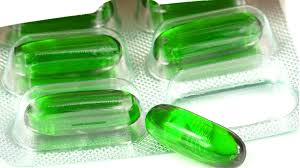

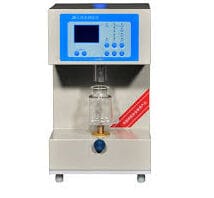
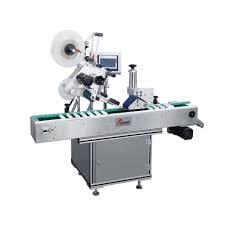
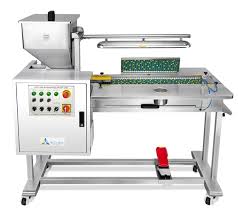
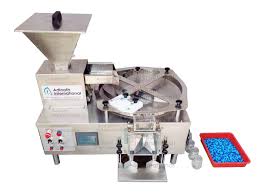
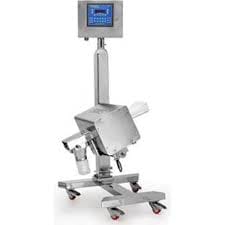






Leave a Reply